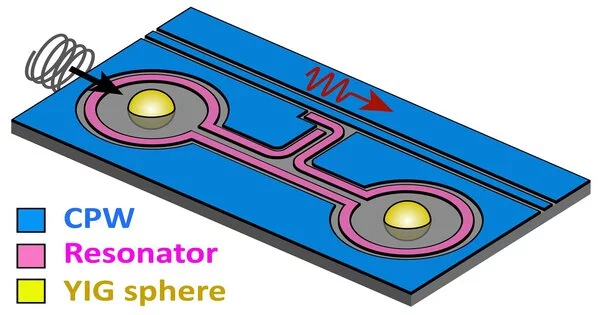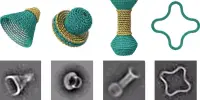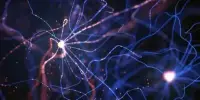Researchers have discovered a type of magnetic behavior that could aid in the development of magnetically based quantum devices. Magnetic interactions could point to the development of miniaturized quantum devices. Magnetism has played a role in pivotal discoveries that reshape our society, from MRI machines to computer hard disk storage. Magnetic interactions may play a role in relaying quantum information in the new field of quantum computing.
Scientists at the U.S. Department of Energy’s (DOE) Argonne National Laboratory have achieved efficient quantum coupling between two distant magnetic devices that can host a type of magnetic excitation known as magnons. When an electric current generates a magnetic field, these excitations occur. Magnons can exchange energy and information through coupling. This kind of coupling may be useful for creating new quantum information technology devices.
“Remote coupling of magnons is the first step, or almost a prerequisite, for doing quantum work with magnetic systems,” said Argonne senior scientist Valentine Novosad, an author of the study. ”We show the ability for these magnons to communicate instantly with each other at a distance.”
This instant communication does not require sending a message between magnons limited by the speed of light. It is analogous to what physicists call quantum entanglement.
Remote coupling of magnons is the first step, or almost a prerequisite, for doing quantum work with magnetic systems. We show the ability for these magnons to communicate instantly with each other at a distance.
Valentine Novosad
Following up on a previous study from 2019, the researchers set out to develop a system that would allow magnetic excitations in a superconducting circuit to communicate with one another at a distance. This would allow the magnons to potentially serve as the foundation for a type of quantum computer. For the fundamental underpinnings of a viable quantum computer, researchers require particles to be coupled and remain coupled for an extended period of time.
Researchers created a superconducting circuit and embedded two small yttrium iron garnet (YIG) magnetic spheres on it to achieve a strong coupling effect. This material, which supports magnonic excitations, ensures efficient and low-loss coupling for the magnetic spheres.
The two spheres are both magnetically coupled to a shared superconducting resonator in the circuit, which acts like a telephone line to create strong coupling between the two spheres even when they are almost a centimeter away from each other – 30 times the distance of their diameters.

“This is a significant achievement,” said Argonne materials scientist Yi Li, lead author of the study. ”Similar effects can also be observed between magnons and superconducting resonators, but this time we did it between two magnon resonators without direct interaction. The coupling comes from indirect interaction between the two spheres and the shared superconducting resonator.”
Quantum computers are not a magical technology that makes a machine self-aware simply because it was applied. Regardless of the computing properties of the machine, the software is still needed to make it work. It is the software that provides the functionalities needed for intelligence to emerge from machines.
The longer coherence of the magnons in the magnetic resonator was an additional improvement over the 2019 study. “If you speak in a cave, you might hear an echo,” Novosad explained. “The greater the duration of that echo, the greater the coherence.”
“Previously, we definitely saw a relationship between magnons and a superconducting resonator,” Li explained. “However, in this study, their coherence times are much longer due to the use of the spheres, which is why we can see evidence of separated magnons talking to each other.”
Quantum communication makes use of photon quantum mechanical entanglement in an optical communication channel. The diagram below shows how a “quantum memory” can be used to build a repeater that uses “entanglement swapping” to extend the distance data can be transported.
The study could lead to miniaturized quantum devices, according to Li, because the magnetic spins are highly concentrated in the device. “Tiny magnets could hold the key to new quantum computers,” he speculated.
















